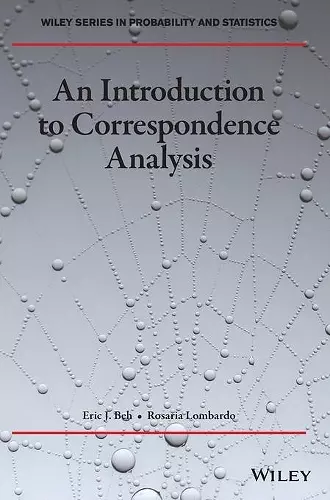An Introduction to Correspondence Analysis
Eric J Beh author Rosaria Lombardo author
Format:Hardback
Publisher:John Wiley & Sons Inc
Published:22nd Apr '21
Should be back in stock very soon

Master the fundamentals of correspondence analysis with this illuminating resource
An Introduction to Correspondence Analysis assists researchers in improving their familiarity with the concepts, terminology, and application of several variants of correspondence analysis. The accomplished academics and authors deliver a comprehensive and insightful treatment of the fundamentals of correspondence analysis, including the statistical and visual aspects of the subject.
Written in three parts, the book begins by offering readers a description of two variants of correspondence analysis that can be applied to two-way contingency tables for nominal categories of variables. Part Two shifts the discussion to categories of ordinal variables and demonstrates how the ordered structure of these variables can be incorporated into a correspondence analysis. Part Three describes the analysis of multiple nominal categorical variables, including both multiple correspondence analysis and multi-way correspondence analysis.
Readers will benefit from explanations of a wide variety of specific topics, for example:
- Simple correspondence analysis, including how to reduce multidimensional space, measuring symmetric associations with the Pearson Ratio, constructing low-dimensional displays, and detecting statistically significant points
- Non-symmetrical correspondence analysis, including quantifying asymmetric associations
- Simple ordinal correspondence analysis, including how to decompose the Pearson Residual for ordinal variables
- Multiple correspondence analysis, including crisp coding and the indicator matrix, the Burt Matrix, and stacking
- Multi-way correspondence analysis, including symmetric multi-way analysis
Perfect for researchers who seek to improve their understanding of key concepts in the graphical analysis of categorical data, An Introduction to Correspondence Analysis will also assist readers already familiar with correspondence analysis who wish to review the theoretical and foundational underpinnings of crucial concepts.
ISBN: 9781119041948
Dimensions: 244mm x 170mm x 21mm
Weight: 567g
240 pages